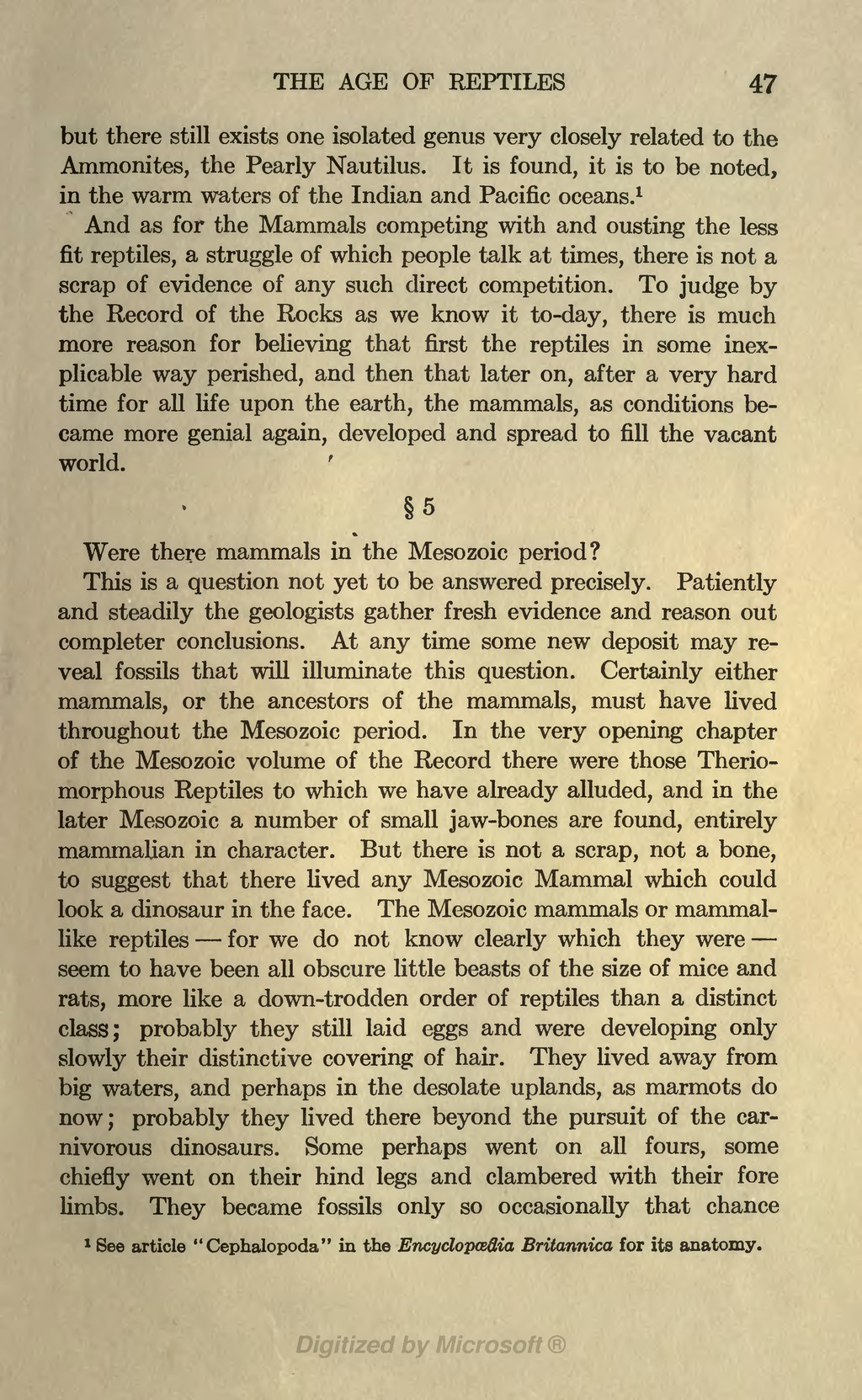but there still exists one isolated genus very closely related to the Ammonites, the Pearly Nautilus. It is found, it is to be noted, in the warm waters of the Indian and Pacific oceans.[1]
And as for the Mammals competing with and ousting the less fit reptiles, a struggle of which people talk at times, there is not a scrap of evidence of any such direct competition. To judge by the Record of the Rocks as we know it to-day, there is much more reason for believing that first the reptiles in some inexplicable way perished, and then that later on, after a very hard time for all life upon the earth, the mammals, as conditions became more genial again, developed and spread to fill the vacant world.
§ 5
Were there mammals in the Mesozoic period?
This is a question not yet to be answered precisely. Patiently and steadily the geologists gather fresh evidence and reason out completer conclusions. At any time some new deposit may reveal fossils that will illuminate this question. Certainly either mammals, or the ancestors of the mammals, must have lived throughout the Mesozoic period. In the very opening chapter of the Mesozoic volume of the Record there were those Theriomorphous Reptiles to which we have already alluded, and in the later Mesozoic a number of small jaw-bones are found, entirely mammalian in character. But there is not a scrap, not a bone, to suggest that there lived any Mesozoic Mammal which could look a dinosaur in the face. The Mesozoic mammals or mammal-like reptiles—for we do not know clearly which they were—seem to have been all obscure little beasts of the size of mice and rats, more like a down-trodden order of reptiles than a distinct class; probably they still laid eggs and were developing only slowly their distinctive covering of hair. They lived away from big waters, and perhaps in the desolate uplands, as marmots do now; probably they lived there beyond the pursuit of the carnivorous dinosaurs. Some perhaps went on all fours, some chiefly went on their hind legs and clambered with their fore limbs. They became fossils only so occasionally that chance
- ↑ See article "Cephalopoda" in the Encyclopædia Britannica for its anatomy.
